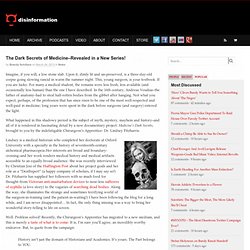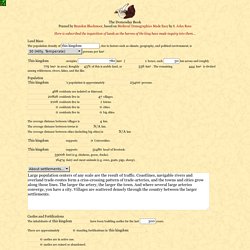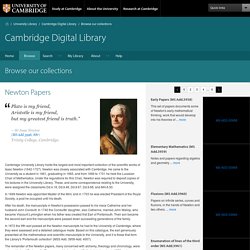

Medieval Demographics Made Easy. Fantasy worlds come in many varieties, from the "hard core" medieval-simulation school to the more fanciful realms of high fantasy, with alabaster castles and jeweled gardens in the place of the more traditional muddy squalor.

Despite their differences, these share a vital common element: ordinary people. Most realms of fantasy, no matter how baroque or magical, can not get by without a supply of ordinary farmers, merchants, quarreling princes and palace guards. Clustered into villages and crowding the cities, they provide the human backdrop for adventure. Of course, doing the research necessary to find out how common a large city should be, or how many shoemakers can be found in a town, can take up time not all GMs have available. To the end of more satisfying world design, I've prepared this article.
This article is a distillation of broad possibilities drawn from a variety of historical reference points, focusing more on results than on the details that create them. Population Spread. The Mystery of Extraordinarily Accurate Medieval Maps. Clues in the Errors Hessler began to look for clues within the portolan charts themselves.

Borrowing the morphometric techniques he used to track movement of the Alpine butterflies’ spots, he transferred each point from a modern Mercator map of the Mediterranean onto the equivalent point on the oldest portolan chart at the Library of Congress. According to carbon dating of its calfskin substrate, this document was created sometime between 1290 and 1350. The resulting grid on the portolan chart was slightly distorted in various small ways — not surprising, given the imprecise sailing data with which the mapmaker likely had to work.
But it was also fairly consistently rotated by 8.5 degrees counterclockwise. Hessler suspected the skew was an artifact of compasses, which had arrived in Europe from China not long before the map was created. Working from compass measurements but not correcting for declination could cause just the kind of rotation Hessler’s analysis revealed. The Dark Secrets of Medicine–Revealed in a New Series! Imagine, if you will, a low stone slab.

Upon it, dimly lit and un-preserved, is a three-day-old corpse going slowing rancid in warm the summer night. This, young surgeon, is your textbook. If you are lucky. For many a medical student, the remains were less fresh, less available (and occasionally less human) than the one I have described. In the 16th century, Andreas Vesalius–the father of anatomy–had to steal half-rotten bodies from the gibbet after hanging. What happened in this shadowy period is the subject of myth, mystery, mayhem and history–and all of it is rendered in fascinating detail by a new documentary project: Medicine’s Dark Secrets, brought to you by the indefatigable Chirurgeon’s Apprentice: Dr. Well. History isn’t just the domain of Historians and Academics. Medicine’s Dark Secrets will explore the reasons why certain bodies and artifacts were put on display in the museums we visit.
Dark London – Dickens App from the Museum of London. Conspiracies & "Lost History" History. Ancient History. World-wide Ancient Site Database, Photos and Prehistoric Archaeology News with geolocation. The Domesday Book - Medieval Demographics Made Easy. The Domesday Book Penned by Brandon Blackmoor, based on Medieval Demographics Made Easy by S.

John Ross Here is subscribed the inquisition of lands as the barons of the king have made inquiry into them... <p>Forsooth, thy browser is truly antiquated! Thou canst not access this web site with a browser such as thine. Land Mass The population density of , due to factors such as climate, geography, and political environment, is persons per km2 . occupies km2 ( hexes, each km across and roughly km2 in area). Population 's population is approximately persons. residents are isolated or itinerant. residents live in villages. residents live in towns. residents live in cities. residents live in big cities. Full text search. The Catalogue. Cambridge Digital Library - University of Cambridge. Cambridge University Library holds the largest and most important collection of the scientific works of Isaac Newton (1642-1727).

Newton was closely associated with Cambridge. He came to the University as a student in 1661, graduating in 1665, and from 1669 to 1701 he held the Lucasian Chair of Mathematics. Michigan Headline News.